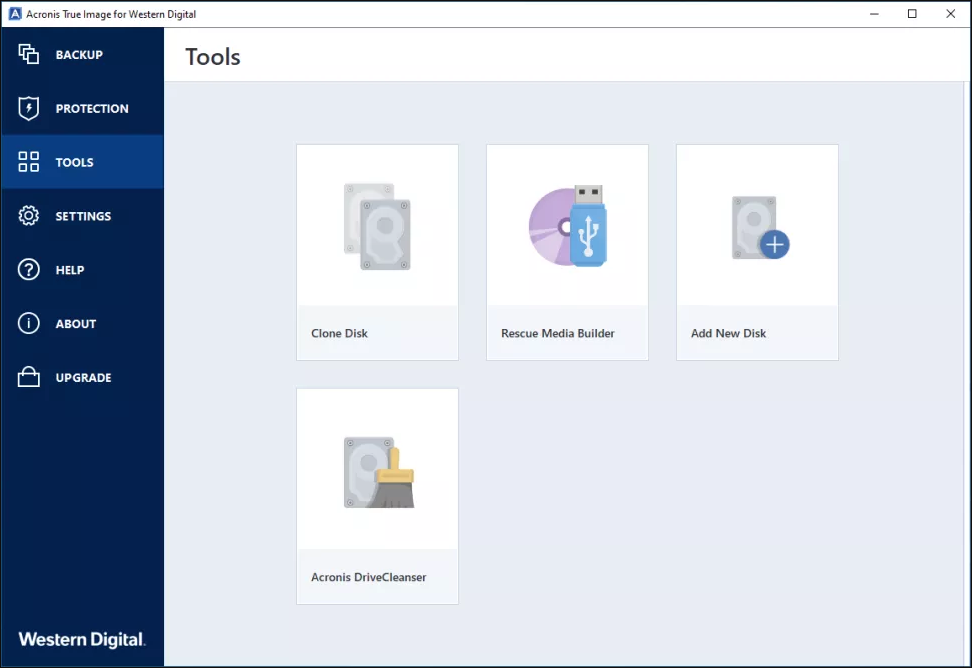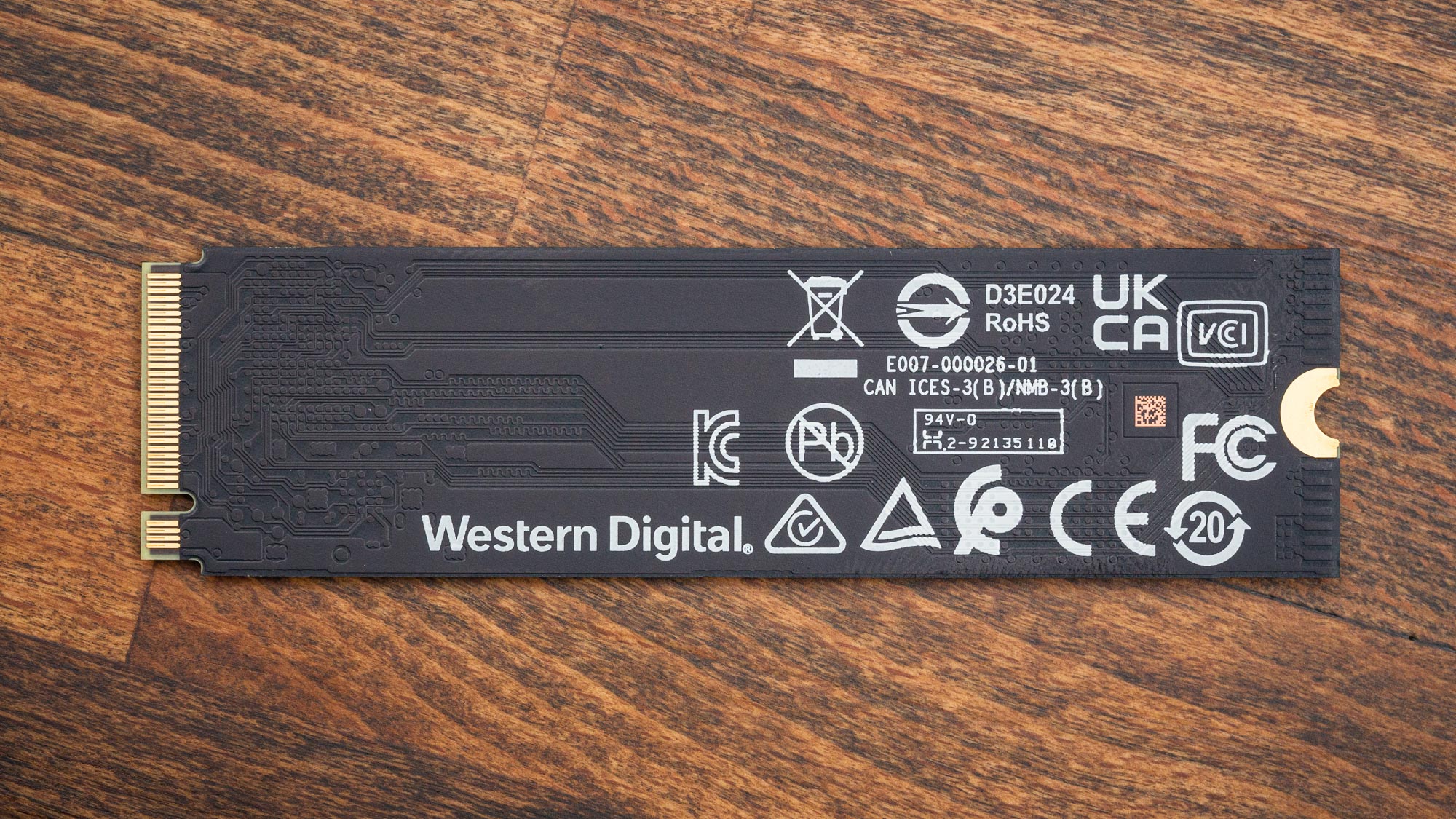Tom's Hardware Verdict
The 2TB WD SN770 isn’t quite as fast as it is at 1TB, but it is still better than PCIe 3.0 drives and older 4.0 alternatives. The extra capacity is nice for the mid-range 4.0 segment especially given its efficiency. However, it can’t keep up with high-end 4.0 drives.
Pros
- +
Fast performance and cool operation
- +
Competitive pricing
- +
Aesthetics
- +
5-year warranty
Cons
- -
Slow write speed after write cache fills
- -
Lacks AES hardware encryption
- -
Not available in 4TB
Why you can trust Tom's Hardware
Update 24th July 2022: We've updated this article with new testing for the 2TB WD Black SN770 SSD on page 2.
Original Review Published February 2, 2022:
WD's Black SN770 SSD delivers up to 5.15 GBps of throughput and 800,000 random IOPS over the PCIe 4.0 bus, all while coming with an aggressive price point that redefines our expectations for a mainstream SSD in 2022. That makes it a top contender for our list of best SSDs.
We recently took a closer look at WD's Black SN750 SE, and while that was a surprising performer and adequate for most use cases, it was clear that the company had more in mind for the true successor to the Black SN750.
While the shift to a DRAM-less architecture wasn't what we expected to see, it seems that the new SN770 shares a similar design. Built with an efficient SSD controller and a single NAND package, the SN770 looks like its predecessors, but with speeds of up to 5.15 GBps, it clearly takes a big step forward. So much so that it makes us reconsider the definition of mainstream SSDs in 2022.
WD's Black SN770 marks the beginning of an era where SSDs capable of 5GBps speeds are mainstream options, while slower SSDs fall into the budget market. PCIe 3.0 SSDs with eight-channel controllers have had their time, but the WD Black SN770 beats them all — all while utilizing a sleeper of an SSD controller that's akin to a wolf in sheep's clothing.
WD says that the SN770 delivers up to 40% faster performance and up to 20% more power efficiency over its previous-gen SSD (1TB Black SN750 SE), thanks in part to the new DRAM-less four-channel SSD controller and TLC flash. While this is a seemingly underwhelming combination of components, it delivers the goods.
Specifications
Product | 250GB | 500GB | 1TB | 2TB |
|---|---|---|---|---|
Pricing | $59.00 | $79.00 | $129.00 | $269.00 |
Capacity (User / Raw) | 250GB / 256GB | 500GB / 512GB | 1000GB / 1024GB | 2000GB / 2048GB |
Form Factor | M.2 2280 | M.2 2280 | M.2 2280 | M.2 2280 |
Interface / Protocol | PCIe 4.0 x4 / NVMe 1.4 | PCIe 4.0 x4 / NVMe 1.4 | PCIe 4.0 x4 / NVMe 1.4 | PCIe 4.0 x4 / NVMe 1.4 |
Controller | WD NVMe Arcitecture | WD NVMe Arcitecture | WD NVMe Arcitecture | WD NVMe Arcitecture |
DRAM | HMB | HMB | HMB | HMB |
Memory | Kioxia BiCS5 112L TLC | Kioxia BiCS5 112L TLC | Kioxia BiCS5 112L TLC | Kioxia BiCS5 112L TLC |
Sequential Read | 4,000 MBps | 5,000 MBps | 5,150 MBps | 5,150 MBps |
Sequential Write | 2,000 MBps | 4,000 MBps | 4,900 MBps | 4,850 MBps |
Random Read | 240,000 IOPS | 460,000 IOPS | 740,000 IOPS | 650,000 IOPS |
Random Write | 470,000 IOPS | 800,000 IOPS | 800,000 IOPS | 800,000 IOPS |
Security | N/A | N/A | N/A | N/A |
Endurance (TBW) | 200 TB | 300 TB | 600 TB | 1,200 TB |
Part Number | WDS250G3X0E | WDS500G3X0E | WDS100T3X0E | WDS200T3X0E |
Warranty | 5-Years | 5-Years | 5-Years | 5-Years |
The Black SN770 is rated for sequential speeds up to 5.15/4.9 GBps read/write and up to 740,000/800,000 random read/write IOPS. The drive is available in 250GB, 500GB 1TB, and 2TB capacities with MSRPs ranging from $0.13-$0.24 per gigabyte. Prices are somewhat aggressive, undercutting PCIe 4.0 SSDs with higher bandwidth while still being competitive with the best PCIe 3.0 models.
WD backs the SN770 with a five-year warranty and average endurance ratings. It leverages a multi-step LDPC ECC engine, RAID ECC, and comes factory overprovisioned by roughly 9.9%, all ensuring write endurance up to 600TB per 1TB of capacity within the five-year warranty (except the 250GB SN770, which is rated for up to 200TB of writes).
Get Tom's Hardware's best news and in-depth reviews, straight to your inbox.
Software and Accessories


The SN770 supports WD’s SSD Dashboard. The software automatically detects WD Black SSDs and enables the dark mode theme within the app. The software also allows you to monitor the SSDs capacity used, remaining endurance, and even performance in real-time. Of course, you can use the software to update the firmware and enable Game Mode, too. Game Mode improves the SN770’s performance by disabling its ability to transition into lower power states, thus reducing latency to help you get a leg up on the competition.
A Closer Look


The WD Black SN770 comes in an M.2 2280 single-sided form factor and contains very few components on top of a gorgeous black PCB. While we like the tidy component layout, the label is a bit busy with QR codes and text. Also, the label on the drive doesn’t match the design shown on the box. Rather than a label covering all the components, our drive shipped with a smaller one between the controller and NAND package, as shown.
Based on its dimensions, the SSD controller appears to be a four-channel design like seen on the SN570 and SN750 SE, but WD is tight-lipped on the specifics. In terms of speed, it definitely outpaces the Phison PS5019-E19T that powers the SN750 SE. In addition, we believe the flash interface speed is also much faster.
WD says the SN770 supports advanced power management to remain cool and efficient during use. Also, if used in a high-temperature environment, it comes with thermal throttling support that prioritizes data integrity over speed. Furthermore, it supports Trim, SMART data reporting, and secure erase capability via the Format NVM command. The WD Black SN770 does not support AES 256-bit hardware encryption, though.
Instead of onboard DRAM, the SN770 leverages Host Memory Buffer (HMB) tech to access up to 64MB of the host system’s RAM for storing parts of the SSD’s mapping tables, thus accelerating performance.
The WD Black SN770 leverages Kioxia’s BiCS5 112-Layer TLC, which is a huge upgrade over the last generation as it comes with a quad-plane architecture that enables twice the write speed of BiCS4. However, while it increases performance, it also requires more peak power consumption under load due to the increase in word line and sense amplifier loading.
There are sixteen 512Gb dies on our 1TB sample and they provide twice the write speed of Kioxia’s BiCS4 96-Layer TLC, which is especially important considering the DRAM-less nature of this SSD. The flash features a circuitry under array (CUA) design that enables Kioxia to scale the flash more easily and skew peak power consumption over time. Also, the company introduced a 4KB page read operation that leverages an all-bitline sensing method that pre-charges each 4KB page to reduce power consumption by up to 40%.
MORE: Best SSDs
MORE: How We Test HDDs And SSDs
MORE: All SSD Content

Shane Downing is a Freelance Reviewer for Tom’s Hardware US, covering consumer storage hardware.
- Sean WebsterStorage Reviewer


